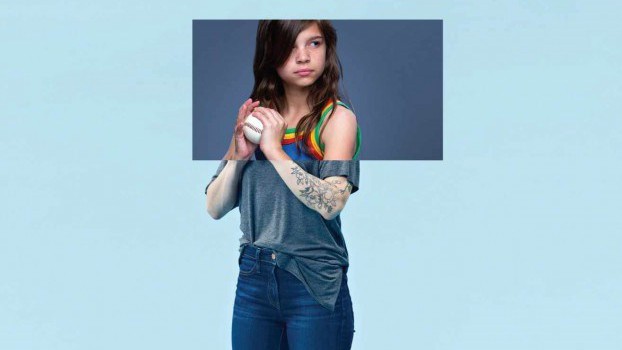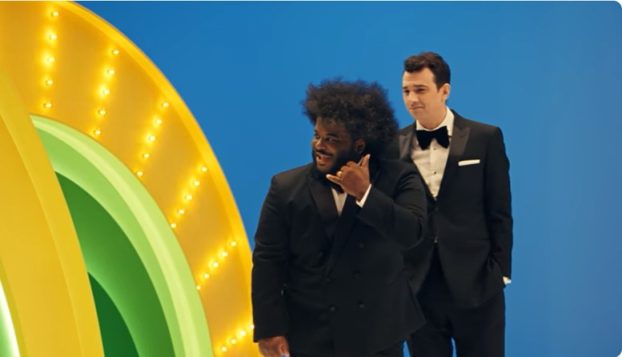CASE STUDIES
CANADIAN TIRE
After seven years, the long-running ‘Ted and Gloria’ campaign was showing signs of fatigue. Taxi’s challenge was to develop an approach that worked just as hard on a product-by-product level, but also helped to build the Canadian Tire brand at a higher level.
The resulting campaign uses a device that is an integral part of the customer experience: the aisle sign. From a shopper’s point of view they make navigating the store easier. From a communication perspective it is a flexible but unifying platform able to introduce new products and move easily from season to season.
The ‘Aisle Signs’ campaign launched in early spring and has featured products ranging from backyard living, camping equipment and closet organizers to hockey gear and back-to-school supplies.
So far the results have been impressive. Awareness scores for the overall campaign are at 90%. Same-store sales, a key retail measure, are up versus last year. The value of the average transaction has increased and research has shown the campaign is tracking well above norm on enjoyability as well as refreshing the brand’s image.
FRESCA
The soft drink category has some of the world’s biggest, most established brands built by decades of support and millions of dollars in investment. Fresca was an outsider, a 35-year-old soft drink that had always been a niche player. Even its most loyal users didn’t know how to describe its taste, which is made from a combination of grapefruit and other citruses. This proved to be an ideal strategic springboard to distinguish the brand from its competition.
There were several goals: reinforce current and lapsed users’ affection for the brand; increase awareness and trial among non-users; and finally, convince retailers to stock the brand, as historically it had had limited distribution, which made it very difficult to increase its share.
The soft drink category usually relies heavily on TV, but to avoid the big-brand treatment, Taxi chose to lead with a heavy radio buy supported with out-of-home activity. The strategy was to parody brand messages that lack originality by highlighting Fresca’s distinctiveness as both a product and a brand with taglines such as ‘Fresca. The Fresca of soft drinks.’ The campaign is the beginning of a longer-term effort, but there has already been an increased shelf presence.
MINI
Mini is an iconoclastic brand. While most automotive brands rely on big TV budgets, Mini uses online for long copy, and OOH and guerrilla tactics for emphasis and brand building. In the past year, a multi-phase campaign leveraged this alternative approach to stretch a limited budget and shift messaging to product substance.
Phase 1 addressed misperceptions arising from the car’s small size with The Speed and Safety Scenario Simulator to give users a ‘virtual driving scenario’ where they could experience Mini’s features in action.
Phase 2 responded to concerns about Mini’s suitability for the Canadian winter with an initiative focused on a dominatrix, a character who personifies control.
Phase 3 showed the breadth of the Mini fleet to highlight the four models while treating them as a group, the Mini Barbershop Quartet, giving each its own song with cheeky lyrics.
Mini is maxi: Year-to-date sales for 2006 are up 10%.
TELUS
With its debut of TV viewing, multiplayer games and music on mobile handsets in the last half of 2005, Telus wanted to introduce Canadians to this new arena of entertainment in anticipation of a major network upgrade in early 2006, which would deliver a powerful viewing and listening experience.
Taxi’s campaign for the brand launched with a TV spot that evoked the days when no television set was complete without a set of rabbit ears, using a bevy of rabbits to demonstrate both TV viewing on a mobile handset as well as other new features. The rabbits also appeared in OOH, newspaper, subway and train wraps, large-format video boards and cinema as well as tactical efforts. In-store activities included the sale of Gund stuffed bunnies, with proceeds going to local charities. The campaign continued through to the holiday gift-giving season, promoting the TV/music/multiplayer platform with an eight-page newspaper execution that interwove New Year’s wishes with product messaging.
The results of this launch were impressive. Double-digit increases in revenue versus the same period in the previous year were accompanied by record-breaking subscriber additions.
WESTJET
The people of WestJet drive its culture. So Taxi decided that fact would be central to the airline’s move to a more national stage.
The result was the ‘Owners’ campaign, which asks: ‘Why do WestJetters care so much? Because we’re also WestJet owners.’ Through the attitudes and actions portrayed in TV, print, radio and out-of-home, Taxi highlighted WestJetters’ commitment to their guests with a dash of quirky humour.
The campaign drove high-level image perceptions. Results are also soaring. The campaign has delivered on every tracking measure put in place, including national awareness.























